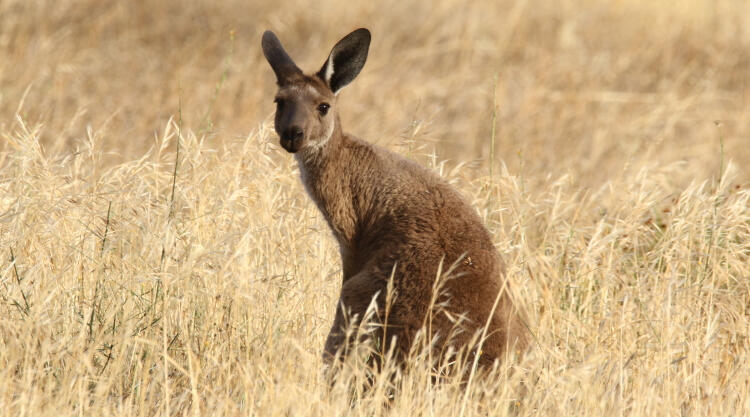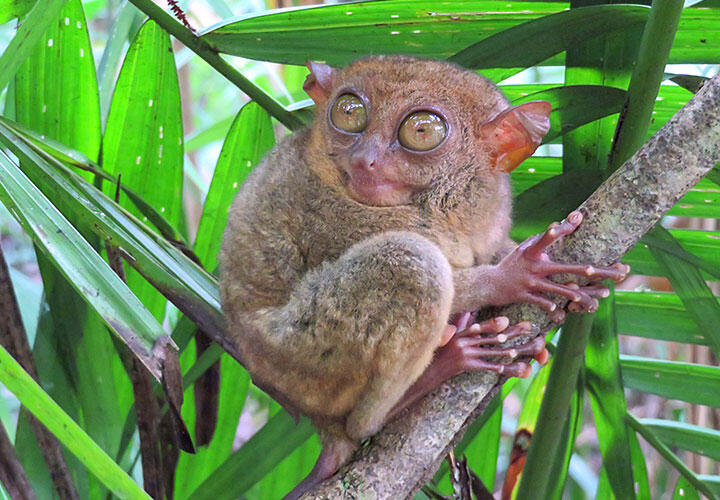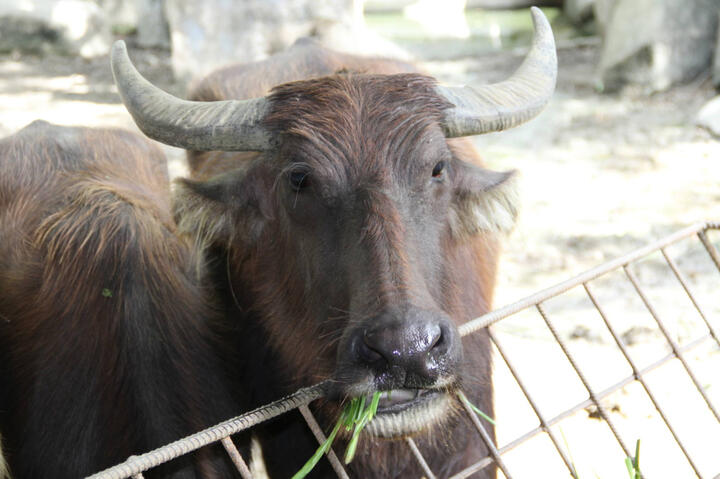Mammalia

Macropus fuliginosus, commonly known as the western gray kangaroo
The defining characteristic of mammals is their ability to produce milk for their offspring from specialized skin glands called the mammary glands. All three groups of mammals have mammary glands that are similar in structure, although monotremes do not have nipples. Modern mammals have hair or fur that allows them to control their body temperature. They are endotherms.
They have large, complex lungs and four-chambered hearts. Their air and food passages are separated by the diaphragm, allowing them to breathe and chew at the same time. As opposed to all other vertebrates, the lower jaws of mammals consist of only a single bone hinged directly to the skull called the dentary.
Most mammals are viviparous; the young are developed inside the body of the parent before they give birth. Placental mammals have a placenta that allows the young and the mother to exchange nutrients and waste, while marsupials give birth to incompletely developed young that continue to develop outside the womb. The only exception is the egg-laying monotremes.
Examples of Mammalia

Carlito syrichta in Bohol, Philippines
Mammalia is classified into three extant groups: monotremes (duck-billed platypus and echidna), marsupials, and eutherian or placental mammals.
Macropus fuliginosus (shown here), commonly known as the western gray kangaroo, is a marsupial. It can be found in the southern parts of Australia as well as on Kangaroo Island just off the coast. The offspring (called a joey) leaves the birth canal and goes to the pouch, where it stays for an average of 46 weeks. The mother may only mate once the joey has left the pouch.
Shown above, Carlito syrichta is commonly known as the Philippine tarsier and is endemic to the rainforests of the Philippines. It is the only species of the genus Carlito. They have big ears, round faces, long and slender arms and legs, and hands with pads that help them cling to branches. As excellent leapers, they can jump distances of up to 20 feet.
Mammalia in the Philippines

Bubalus bubalis in Avilon Zoo, Rizal, Philippines
The Philippines has a diverse population of some 214 native mammal species and seven introduced species. Around 125 of the native terrestrial mammals and 101 of non-flying native mammals are endemic.
Despite the popular notion that the carabao, a swamp-type water buffalo (Bubalus bubalis, shown above) is the national animal of the Philippines, this has no basis in the law. They are used by farmers for the payatak method in farming where the paddies are stepped on to ready for planting.
Carlito syrichta (shown here), the Philippine tarsier, is found at the back of the 200-peso bill along with the Chocolate Hills in Bohol. They are used as tourist attractions particularly in Bohol. Trees have been stripped bare for ease of viewing for the tourists, and the light hurts the nocturnal tarsiers' eyes. The illegal hunting and pet trade of tarsiers is also prevalent, now mostly conducted through online platforms, and it is now classified as near threatened by the IUCN.